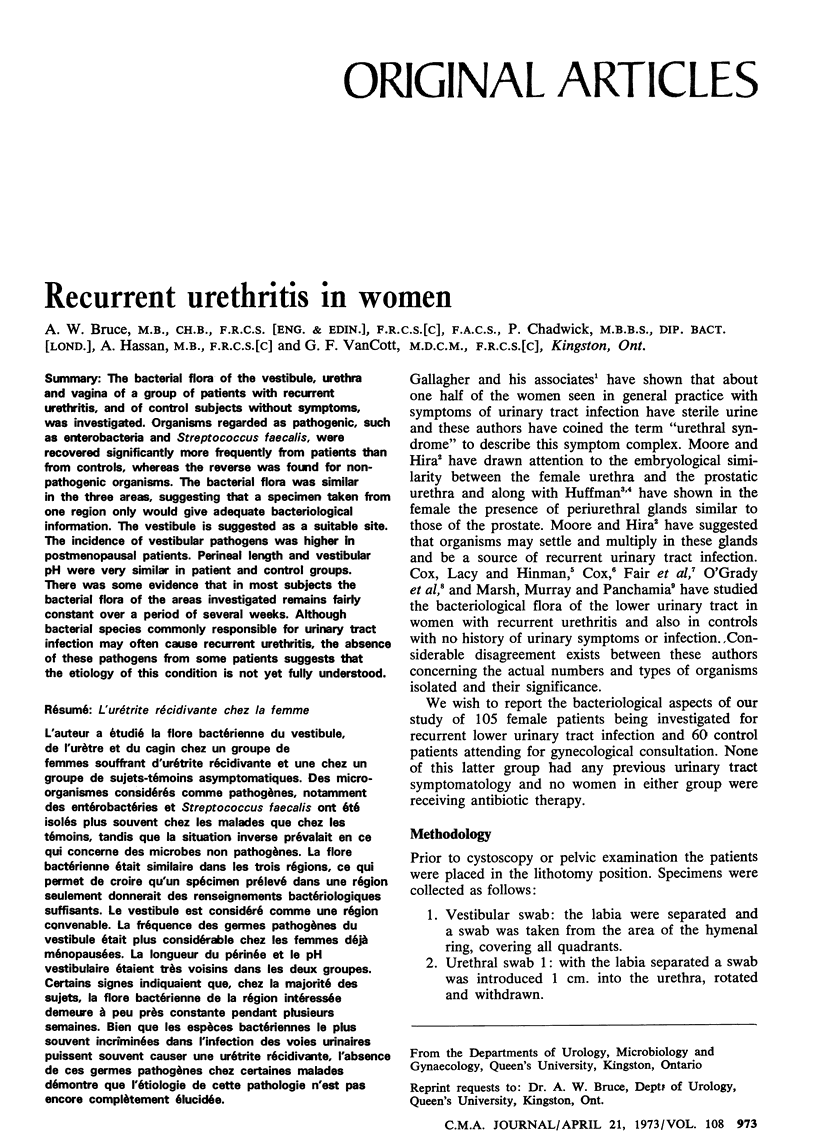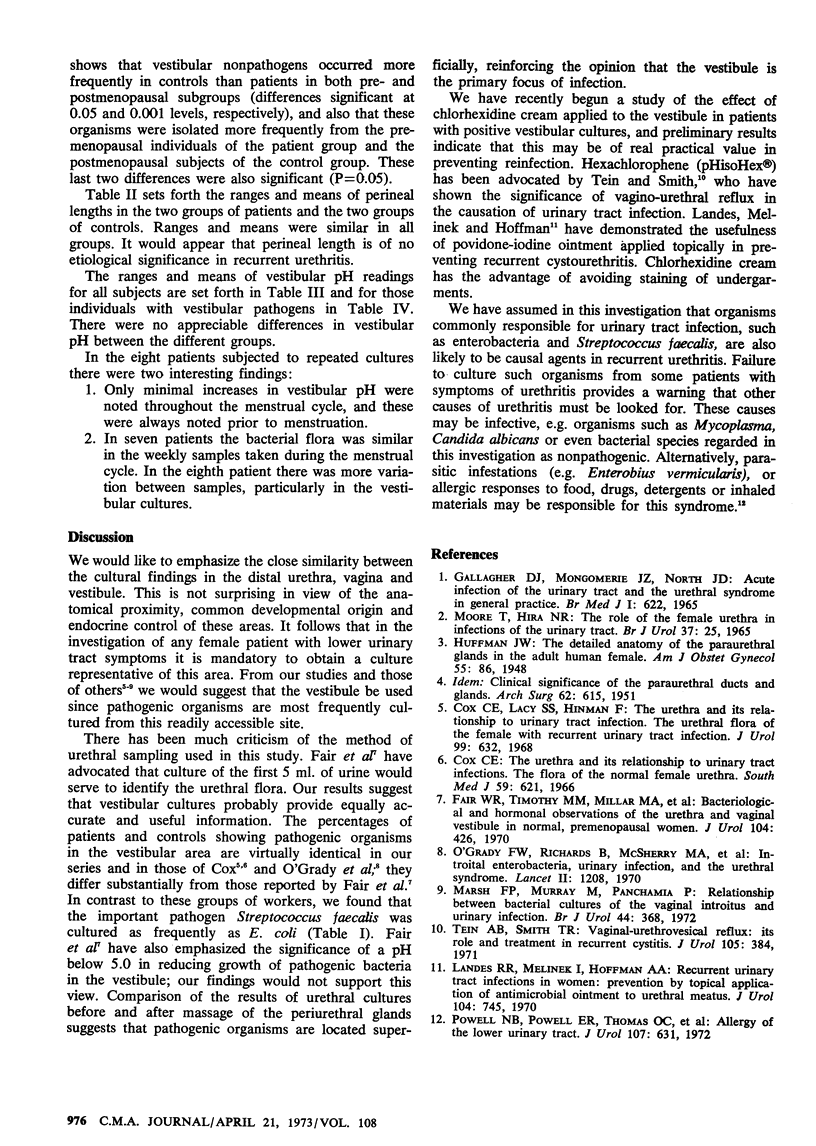Abstract
The bacterial flora of the vestibule, urethra and vagina of a group of patients with recurrent urethritis, and of control subjects without symptoms, was investigated. Organisms regarded as pathogenic, such as enterobacteria and Streptococcus faecalis, were recovered significantly more frequently from patients than from controls, whereas the reverse was found for non-pathogenic organisms. The bacterial flora was similar in the three areas, suggesting that a specimen taken from one region only would give adequate bacteriological information. The vestibule is suggested as a suitable site. The incidence of vestibular pathogens was higher in postmenopausal patients. Perineal length and vestibular pH were very similar in patient and control groups. There was some evidence that in most subjects the bacterial flora of the areas investigated remains fairly constant over a period of several weeks. Although bacterial species commonly responsible for urinary tract infection may often cause recurrent urethritis, the absence of these pathogens from some patients suggests that the etiology of this condition is not yet fully understood.
Full text
PDF



Selected References
These references are in PubMed. This may not be the complete list of references from this article.
- Corwin S. H., Malament M., Small M., Strauss H. D. Experiences with F-32 in advanced carcinoma of the prostate. J Urol. 1970 Nov;104(5):745–748. doi: 10.1016/s0022-5347(17)61826-3. [DOI] [PubMed] [Google Scholar]
- Cox C. E., Lacy S. S., Hinman F., Jr The urethra and its relationship to urinary tract infection. II. The urethral flora of the female with recurrent urinary infection. J Urol. 1968 May;99(5):632–638. doi: 10.1016/S0022-5347(17)62762-9. [DOI] [PubMed] [Google Scholar]
- Cox C. E. The urethra and its relationship to urinary tract infection: the flora of the normal female urethra. South Med J. 1966 May;59(5):621–626. doi: 10.1097/00007611-196605000-00027. [DOI] [PubMed] [Google Scholar]
- Fair W. R., Timothy M. M., Millar M. A., Stamey T. A. Bacteriologic and hormonal observations of the urethra and vaginal vestibule in normal, premenopausal women. J Urol. 1970 Sep;104(3):426–431. doi: 10.1016/s0022-5347(17)61752-x. [DOI] [PubMed] [Google Scholar]
- GALLAGHER D. J., MONTGOMERIE J. Z., NORTH J. D. ACUTE INFECTIONS OF THE URINARY TRACT AND THE URETHRAL SYNDROME IN GENERAL PRACTICE. Br Med J. 1965 Mar 6;1(5435):622–626. doi: 10.1136/bmj.1.5435.622. [DOI] [PMC free article] [PubMed] [Google Scholar]
- MOORE T., HIRA N. R. THE ROLE OF THE FEMALE URETHRA IN INFECTIONS OF THE URINARY TRACT. Br J Urol. 1965 Feb;37:25–33. doi: 10.1111/j.1464-410x.1965.tb09569.x. [DOI] [PubMed] [Google Scholar]
- Marsh F. P., Murray M., Panchamia P. The relationship between bacterial cultures of the vaginal introitus and urinary infection. Br J Urol. 1972 Jun;44(3):368–375. doi: 10.1111/j.1464-410x.1972.tb10093.x. [DOI] [PubMed] [Google Scholar]
- O'Grady F. W., Mcherry M. A., Richards B., Cattell W. R., O'Farrell S. M. Introital enterobacteria, urinary infection, and the urethral syndrome. Lancet. 1970 Dec 12;2(7685):1208–1210. doi: 10.1016/s0140-6736(70)92177-x. [DOI] [PubMed] [Google Scholar]
- Powell N. B., Powell E. B., Thomas O. C., Queng J. T., McGovern J. P. Allergy of the lower urinary tract. J Urol. 1972 Apr;107(4):631–634. doi: 10.1016/s0022-5347(17)61100-5. [DOI] [PubMed] [Google Scholar]
- Tein A. B., Smith T. R. Vaginal-urethrovesical reflex: its role and treatment in recurrent cystitis. J Urol. 1971 Mar;105(3):384–387. doi: 10.1016/s0022-5347(17)61531-3. [DOI] [PubMed] [Google Scholar]


